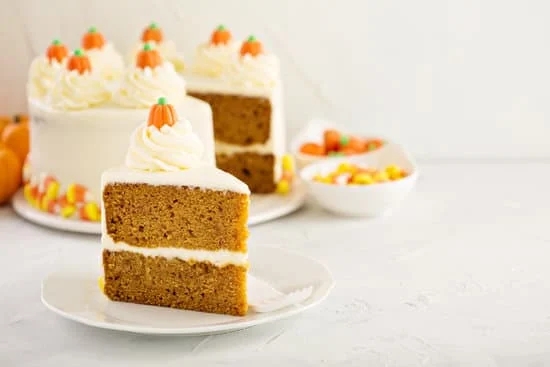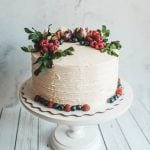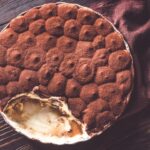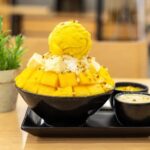Chocolate pieces are not only delicious additions to cakes but also serve as exquisite decorations that elevate the overall presentation. In this article, we delve into the art of creating chocolate pieces specifically for cake decorating. From intricate shapes to whimsical figures, knowing how to make chocolate pieces for cake decorating opens up a world of possibilities for adding a touch of elegance and creativity to your confectionery creations.
When it comes to crafting chocolate decorations, choosing the right type of chocolate is essential. Whether milk, dark, or white chocolate, each variety brings its unique flavor profile and characteristics to the table. Understanding the differences between these types of chocolate will help you achieve the desired texture and appearance for your decorations. With the right tools and techniques at your disposal, you can master the art of making chocolate pieces that not only look stunning but also taste divine.
From tempering chocolate to molding shapes and piping intricate designs, there are various steps involved in creating perfect chocolate pieces for cake decorating. In this comprehensive guide, we will walk you through the process step by step, ensuring that you achieve a professional finish every time. So grab your tools, stock up on quality chocolate, and get ready to embark on a sweet journey of transforming simple confections into works of art with our expert tips and tricks.
Types of Chocolate Suitable for Making Decorations
Chocolate is a versatile ingredient that can be used to create beautiful and delicious decorations for cakes. When it comes to making chocolate pieces for cake decorating, choosing the right type of chocolate is crucial. There are different types of chocolate available in the market, each with its unique characteristics that make them suitable for specific decoration purposes.
One of the most commonly used chocolates for making decorations is dark chocolate. Dark chocolate has a rich and intense flavor, which can add depth to your cake decorations. It also sets firm at room temperature, making it ideal for creating intricate shapes and designs. Another popular option is milk chocolate, which has a sweeter taste compared to dark chocolate. Milk chocolate is great for adding a touch of sweetness to your decorations.
White chocolate is another favorite choice for making chocolate pieces for cake decorating. While technically not a true chocolate because it doesn’t contain cocoa solids, white chocolate has a creamy texture and delicate flavor that works well in creating elegant decorations. Regardless of the type of chocolate you choose, it’s essential to use high-quality couverture chocolate, which contains a higher percentage of cocoa butter and produces superior results.
| Type of Chocolate | Main Characteristics |
|---|---|
| Dark Chocolate | Rich flavor, sets firm at room temperature |
| Milk Chocolate | Sweet taste, ideal for adding sweetness to decorations |
| White Chocolate | Creamy texture, delicate flavor, great for elegant designs |
When selecting the type of chocolate for your decorations, consider the flavor profile you want to achieve and the complexity of the design you intend to create. Each type of chocolate brings its unique characteristics that can enhance the overall visual appeal and taste of your cake decorations. By understanding the qualities of different chocolates, you can better choose the one that best suits your decorating needs and preferences.
Equipment Needed for Making Chocolate Pieces
When it comes to making chocolate pieces for cake decorating, having the right equipment is crucial to ensure successful results. There are several essential tools needed for the process that can make the task easier and more efficient. One of the most important pieces of equipment is a double boiler or microwave-safe bowl for melting the chocolate.
This ensures that the chocolate melts evenly and without burning, resulting in a smooth texture. Additionally, a silicone spatula or spoon is essential for stirring and tempering the chocolate properly.
Another essential tool for making chocolate decorations is a piping bag or squeeze bottle for creating intricate designs. These tools allow for precise application of the melted chocolate onto molds or parchment paper. Silicone molds come in handy when shaping chocolate into specific forms such as flowers, leaves, or other decorative elements. These molds help give the chocolate pieces a professional look and can be easily removed once the chocolate has set.
Aside from these basic tools, having a good quality offset spatula or palette knife is useful for spreading out and smoothing melted chocolate onto surfaces before allowing it to set. A cooling rack is also necessary for setting the chocolate decorations as it allows air to circulate around them, ensuring they harden properly. With these essential tools at hand, you will be well-equipped to create beautiful and delicious chocolate pieces for cake decorating.
| Equipment | Importance |
|---|---|
| Double boiler/microwave-safe bowl | Ensures even melting of chocolate |
| Silicone spatula/spoon | For stirring and tempering chocolate |
| Piping bag/squeeze bottle | Precise application of melted chocolate |
Step-by-Step Guide on Tempering Chocolate
Tempering chocolate is a crucial step in making chocolate pieces for cake decorating. When chocolate is tempered correctly, it has a smooth texture, glossy finish, and satisfying snap when broken. This process involves melting the chocolate to a specific temperature, then cooling it while agitating to form stable crystals. Here is a step-by-step guide on how to temper chocolate for creating beautiful decorations:
- Start by choosing high-quality chocolate that is suitable for tempering, such as couverture or baking chocolate.
- Chop the chocolate into small, uniform pieces to ensure even melting.
- Place about two-thirds of the chopped chocolate in a heatproof bowl set over a pot of simmering water (double boiler) and melt gently, stirring occasionally with a spatula. Make sure the water does not touch the bottom of the bowl.
- Monitor the temperature with a candy thermometer and heat until the chocolate reaches 115-120°F (46-49°C) for dark chocolate, 110-115°F (43-46°C) for milk or white chocolate.
- Remove the bowl from heat and add the remaining one-third of chopped chocolate. Stir continuously until all the added chocolate has melted completely and cooled down to around 82-84°F (28-29°C) for dark chocolate or 80-82°F (27-28°C) for milk or white chocolate.
- Once the desired temperature is reached, place the bowl back over simmering water briefly for a few seconds at a time while stirring constantly to raise the temperature slightly before removing it from heat. The tempered chocolate is now ready to be used for creating intricate decorations on your cakes.
By following these steps carefully and ensuring precision in temperatures during each stage of tempering, you can achieve perfectly tempered chocolate that will enhance your cake decorating skills. Practice makes perfect when it comes to tempering chocolate, so don’t be discouraged if your first attempts are not flawless. Experiment with different techniques and have fun creating beautiful and delicious designs with your homemade chocolate pieces.
Techniques for Creating Chocolate Shapes
Chocolate pieces are a versatile and delicious way to add an extra touch of elegance to any cake. Whether you’re looking to create intricate designs or simple accents, knowing how to make chocolate pieces for cake decorating can take your baked creations to the next level. There are various techniques you can use to create beautiful chocolate shapes, such as molding, piping, and freehand drawing.
To help you master the art of chocolate decorations, here are some techniques you can try:
- Molding: Molding is a great way to create uniform and detailed chocolate pieces for your cakes. You can use silicone molds in different shapes and sizes to mold melted chocolate into beautiful decorations. Simply pour the melted chocolate into the molds, tap them gently on the counter to remove any air bubbles, and allow them to set in the refrigerator until firm.
- Piping: Piping is a more advanced technique that involves using a piping bag or squeeze bottle to create intricate designs with melted chocolate. You can pipe swirls, flowers, or even custom messages onto parchment paper or directly onto your cake. To ensure precision when piping, practice on a flat surface before moving onto your actual cake.
- Freehand Drawing: Freehand drawing with melted chocolate allows for ultimate creativity in your cake decorating. Using a small piping bag filled with tempered chocolate, you can draw delicate lines, patterns, or shapes directly onto your cake. This technique requires a steady hand and practice but can result in stunning personalized decorations.
Experimenting with these different techniques will not only enhance the visual appeal of your cakes but also elevate their taste with delicious chocolate accents. Remember that practice makes perfect when it comes to creating chocolate pieces for cake decorating, so don’t be afraid to try out new shapes and designs.
Tips for Successful Chocolate Decorations
Use High-Quality Chocolate
One of the key tips for successful chocolate decorations is to use high-quality chocolate. The quality of the chocolate will greatly impact the final result of your decorations. Opt for good quality chocolate that has a higher cocoa content for better flavor and texture. Avoid using cheap, low-quality chocolate as it may not melt properly or result in a dull finish.
Prep Your Workspace
Before you start making your chocolate pieces, make sure your workspace is clean and dry. Any moisture can cause the chocolate to seize up and become unusable. Additionally, ensure that all your tools and equipment are dry as well. Use parchment paper or a silicone baking mat to prevent the chocolate from sticking to surfaces.
Practice Patience When Tempering
Tempering chocolate is a crucial step in creating successful decorations. Take your time when tempering the chocolate and follow the temperature guidelines carefully. Be patient and do not rush the process, as proper tempering ensures that the chocolate sets correctly and has a shiny finish. Remember to stir the chocolate continuously while tempering to achieve smooth, lump-free results.
By following these tips, you can ensure that your chocolate decorations turn out beautifully and add an elegant touch to your cakes. Experiment with different techniques and shapes to create unique designs that will impress your guests. With practice and attention to detail, you can master the art of making chocolate pieces for cake decorating.
Storage and Handling of Chocolate Decorations
When it comes to chocolate decorations for cake decorating, proper storage and handling is crucial to maintain the quality and appearance of the chocolate pieces. Whether you have created intricate chocolate shapes or simple curls, following these guidelines will ensure that your decorations stay looking their best until you are ready to use them.
Storage
After creating your chocolate pieces, it is important to store them in a cool, dry place away from direct sunlight. Excessive heat can cause the chocolate to melt or lose its shape, while moisture can cause it to become sticky or discolored. Consider storing your chocolate decorations in an airtight container or resealable plastic bag to protect them from any outside elements.
Handling
When handling chocolate decorations, it is essential to do so with clean hands or gloves to prevent any transfer of oils or dirt onto the delicate pieces. Be gentle when placing the decorations on cakes or other desserts, as rough handling can lead to breakage or damage. If you need to transport the decorated cake, ensure that the chocolate pieces are securely placed on top and around the sides of the cake to prevent any shifting during transit.
Longevity
To prolong the longevity of your chocolate decorations, avoid placing them in the refrigerator as condensation can form and affect their appearance. Instead, opt for storing them at room temperature in a controlled environment.
If you foresee not using the decorations for an extended period, consider freezing them in an airtight container; just be sure to allow them to come back to room temperature before using them for cake decorating. By following these storage and handling guidelines, you can ensure that your beautifully crafted chocolate pieces remain intact and ready for your next creative cake design.
Creative Ways to Use Chocolate Pieces in Cake Decorating
Chocolate pieces are not just a tasty addition to cakes, but they also serve as a beautiful and creative way to enhance the visual appeal of your desserts. By learning how to make chocolate pieces for cake decorating, you open up a world of possibilities for expressing your creativity and wowing your guests with stunning cake designs.
One of the key aspects to consider when creating chocolate decorations is the type of chocolate you use. It is important to choose high-quality chocolate that has good tempering properties, such as dark, milk, or white chocolate.
Each type has its own unique characteristics and flavors that can complement different cake flavors and designs. Additionally, having the right equipment, such as a double boiler or microwave-safe bowl for melting chocolate, molds for shaping pieces, and piping bags for intricate designs, is essential for achieving professional-looking results.
To successfully create chocolate decorations that will impress your guests, mastering the art of tempering chocolate is crucial. Tempering involves heating and cooling the chocolate to specific temperatures in order to achieve a smooth texture and glossy finish.
By following a step-by-step guide on tempering chocolate, you can ensure that your chocolate pieces have the perfect consistency for molding, piping, or freehand drawing. Experiment with various techniques like molding shapes in silicone molds or using piping bags to create intricate designs on parchment paper before transferring them onto your cakes.
Frequently Asked Questions
How to Make Decorative Chocolate Pieces?
Making decorative chocolate pieces involves melting chocolate, pouring it into molds, and allowing it to set. Once hardened, carefully remove the chocolate from the mold and use as desired to embellish cakes, cupcakes, or other desserts.
How Do You Melt Chocolate for Cake Decorations?
To melt chocolate for cake decorations, chop it into small, uniform pieces to ensure even melting. Use a double boiler or microwave in short bursts at low power, stirring frequently. Be careful not to overheat the chocolate to avoid burning or seizing.
Which Chocolate Is Used for Cake Decorating?
The type of chocolate used for cake decorating depends on personal preference and the desired flavor profile. Common choices include dark, milk, or white chocolate – each offering a different taste and color. Consider using a high-quality chocolate with good melting properties for best results in cake decorating endeavors.

Welcome to our cake decorating blog! My name is Destiny Flores, and I am the proud owner of a cake decorating business named Cake Karma. Our mission is to provide delicious, beautiful cakes for all occasions. We specialize in creating custom cakes that are tailored specifically to each customer’s individual needs and tastes.





